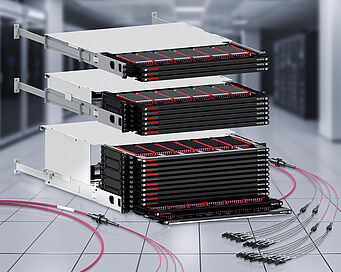In the world of data centers, efficiency and organization play a crucial role. The way in which hardware components are managed and stored can have a significant impact on performance, availability and operating costs. In this context, tray registers are becoming increasingly important. But what makes these systems so special and can they really replace traditional panels?
Advantages of modern tray registers
Tray registers offer a number of advantages that go beyond the mere storage of hardware. They enable compact, accessible and secure storage of servers, network devices, cables and accessories. But their importance extends far beyond mere organization. Modern tray registers make a decisive contribution to cooling, stability, availability, maintenance and energy savings in data centers. This is because tray registers can be integrated more flexibly and modularly, allow smaller areas in racks to be utilized and significantly improve accessibility to cables and devices.






